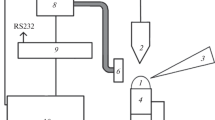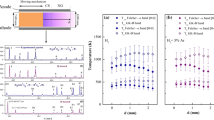Abstract
The Ar spectral lines are suppressed in glow discharge source atomic emission spectroscopy by a double voltage modulation technique with a supplementary electrode. The voltage is modulated between two levels, typically 350 and 700 V. At the lower voltage level mainly the Ar emission occurs where at the higher voltage level both the Ar and the metal atoms sputtered from the sample contribute to the emission. The power supply of the supplementary electrode is switched on when the glow discharge passes from operation at 700 V to 350 V. The intensity of argon gase lines is regulated by the current applied to the supplementary electrode at that period. Therefore, there is no need for electronical amplification and lower voltage adjustment of two operation modes. This modified DVM technique has been applied to the determination of Si and Cu in Al- samples. The suppression of Ar lines is possible, and the elements can be determined without Ar interferences.
Similar content being viewed by others
Author information
Authors and Affiliations
Rights and permissions
About this article
Cite this article
Doğan, M., Ülgen, A. The application of a double voltage modulation technique to a glow discharge source with a supplementary electrode. Fresenius J Anal Chem 355, 651–653 (1996). https://doi.org/10.1007/s0021663550651
Received:
Revised:
Accepted:
Issue Date:
DOI: https://doi.org/10.1007/s0021663550651




